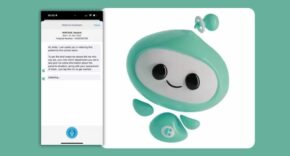The Pennine Acute Hospitals NHS Trust has chosen to partner with software and consultancy provider Hicom to use its diabetes management system, Diamond, which provides digital access to patient medical data whenever there is patient interaction. The solution is used across all four sites, including North Manchester General Hospital, Fairfield General Hospital in Bury, The Royal Oldham Hospital and Rochdale Infirmary. As well as being multi-sited, the Trust runs integrated services and clinics in the community, meaning clinicians and community nurses additionally require access to patient data from a number of different locations.
Collaboration to succeed
Diamond consolidates data from multiple sources into one single view, enabling diabetes healthcare professionals to access patient information across multiple departments. Since implementing the system, the Trust has achieved significant efficiencies due to the way in which Diamond integrates with PAS, pathology and the Trust’s letter management system and it has also enabled a move away from paper-based records.
Critical to the success of a major technology project is a champion who fully understands the processes and workflows as well as the supporting software. The Trust brought both key elements together, demonstrating great collaboration by adjusting and adapting the ways of working, and the technology.
Stephanie Tarpey, Clinical Systems Team Manager at The Pennine Acute Hospitals NHS Trust, was crucial to the integration of Diamond at Pennine Acute: “I was determined to ensure that the numerous benefits of the software were being used across the entire Trust. I set up Diamond user groups so that clinicians could attend and discuss the system and any issues or changes they would like to see. We worked closely with Hicom who really listened to our needs and have always been open to suggestions. They are active in consulting with clinicians, to respond to feedback on software enhancements and quickly resolve any issues.
“I also made sure that every user on the system was fully trained in a way that was tailored towards their role. For example, dieticians would need a different instruction approach to the nurses or consultants. They wouldn’t have to listen to the generic training sessions, half of which they probably wouldn’t use, and this proved to be really beneficial as the partnership has expanded to cover departments including podiatry, dietetics, maternity departments etc.”
Achieving integrated diabetes care
The integration with multiple systems enables patient information that is updated across the Trust in PAS to be automatically filtered through to a single record in Diamond. Specific clinic codes can be added to the interface, so if an existing patient is booked into that clinic, it automatically populates into Diamond and displays all vital information, such as upcoming appointments. For new patients referred into the service, once added onto PAS, a new record in Diamond will automatically be created, so when the clinical staff see them for the first time, they don’t need to waste time creating a new record, removing the need for locating and manually pulling the record across.
With the Pathology interface, Diamond provides clinicians, nurses and dieticians the ability to quickly access up to date patient lab results. Tests can be ordered from any department, such as rheumatology, and as long as the lab test is administered via the Trust’s Labs, the result will automatically filter through to Diamond and is displayed in line with the patient record. This saves time and money by removing duplicate tests, but also allows diabetes professionals to deliver holistic care.
The Trust also has a Diamond interface to its Automated Letter System (ALS), so any letters created automatically copy across to ALS. This allows different departments who do not have access to Diamond to have visibility of patient letters that would show if a patient has had treatment elsewhere, their medication history, when they were last seen, and who is treating that patient. This is especially important for those individuals that suffer from more than one medical condition, as it allows clinicians to select the most appropriate treatment. Letter templates can be set by the diabetes team and can automatically populate information required from Diamond, saving valuable time.
Stephanie comments: “The efficiencies that come from having full digital visibility of patient data in one interface has been invaluable. With Diamond, we have seen significant time savings and a vast increase in data accuracy. Data can be viewed electronically from primary care centres as well as within the hospital environment, negating the need for clinicians to transport cumbersome case files around with them and allowing for broader patient information to be recorded.”
Transition to adult care
When a patient is making the transition from paediatric to adult care, it’s essential to have a reliable process to ensure all of the right information is carried across. Steph continues: “During the handover period, patient information needs to flow because the condition of the patient doesn’t change just because of their age, they still have diabetes and all of their data is still crucial to their care. Diamond provides the ability to pull across the full history of the patient’s data from their paediatric record automatically, giving clinicians the reassurance that they have the right information and the patient peace of mind that they don’t have to start from scratch and repeat themselves, which increases the chances of key information being missed.”
Information flow is crucial to better care and Diamond provides visibility of the entire patient history, including letters, diagnosis date, how they are dealing with their condition and treatment. Having the data at your fingertips makes the transition much smoother and helps the patient to feel more secure, putting them at the centre of their treatment.
Audit
Diamond is vital when it comes to collecting accurate data for national audits including the National Diabetes Audit (NDA) and the National Paediatric Diabetes Audit (NPDA). In addition, the software allows the Trust to measure progress including quality of care, departmental and individual performance. Stephanie comments: “It’s practically impossible for us to enter information for audit and regular reports manually because we’re such a large trust, without the single digital view of data we would have to trawl through paperwork housed in numerous departments across multiple sites. Instead, we have access to all of the different fields we need through one dashboard, making the task of submitting information to audit and our regular reports much quicker, seamless and far more accurate.”
Conclusion
By integrating patient information into one central platform, clinicians can be confident that they have access to accurate and complete data so they can make safer and better-informed decisions on diabetes care. Stephanie concludes: “The solution has helped the Trust to standardise processes through an intuitive and user-friendly system, significantly reducing the quantity of manual data input and admin workload for clinicians. Critically, even for such a large technology deployment, the collaborative relationship we have formed between our teams, departments and Hicom has meant that the entire Trust is reaping the benefits of the system in being able to deliver improved patient care.”












